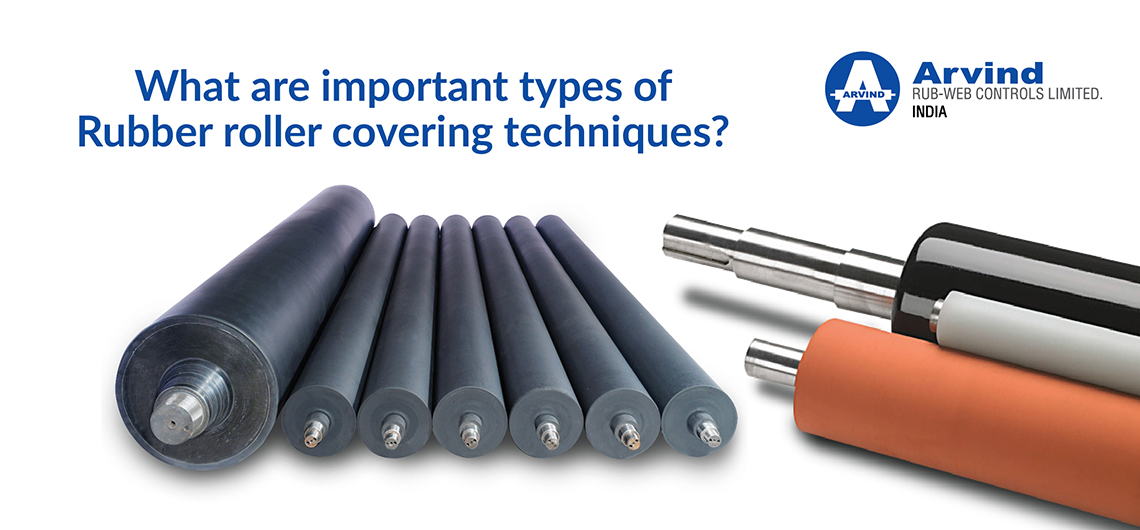
This is going to be an important write-up for manufacturing industries. In this business-centric blog, we are going to emphasize a wide range of rubber rollers covering techniques. Before that happens, let’s understand the rubber roller. What is it all about? Why do manufacturing companies focus on this product?
Learn about the rubber roller in simple language
When we think about rollers, people generally think about paintbrushes and wiping rollers. That’s not true. Truth is an industrial rubber roller is designed for applications wherein a high degree of contact is required, at the same time holding friction. These are suitable for material processing applications requiring soft touch.
Significant features, specifications, and industry
Now, let’s shift our focus to another key subject. In this section, we will get to know about rubber roller features, specifications, and Industry.
Attributes
-
Returns to its original shape, if distorted during application
-
Resistant to chemicals
-
High tensile strength
-
Resistant to wear and tear
-
Resistant to scratching and bumping
-
High coefficient of friction
-
Swiftly compensates to small changes that occur in machines precision
Applications
-
Gravure printing (Printing)
-
Flexo graphic printing (Printing)
-
Solventless lamination (Lamination)
-
Solvent-based lamination (Lamination)
-
Extrusion lamination (Hard chrome plated rollers)
-
Adhesive coating (Hard chrome plated rollers)
-
Tape line / Woven sack (Silicon rollers)
-
Blown film line (Silicon rollers)
-
Bopp/polyester line (Palletizer rollers)
-
Pelletize machine (Palletizer rollers)
Industry
-
Packaging
-
Paper
-
Plywood
-
Tyre
-
Steel
Rubber roller covering techniques
Rubber roller manufacturers across India, including Ahmedabad, India is using various trusted techniques of applying rubber to a metal core. Here are the most used techniques:
-
Traditional wrapping
-
Extrusion wrapping
-
Cross-head extrusion
-
Three roll builders
Traditional wrapping
In this type of wrapping, covering begins with cutting the rubber sheet as per the dimensions of the roller. Afterward, the core goes through the lathe for the final finishing.
Extrusion method
This is also one of the leading covering techniques. In this method batches that can be fed to the extruder are more than enough. There is no need for expensive calendared rubber.
Cross-head extrusion
For mass production of rubber rolls, cross-head extrusion is one of the recommended methods of covering.
Three roll builders
This technique is also extremely popular among manufacturers. When the core is ready for covering, the calendared rubber is torn to it. It is applied to cover the width of the roller. Afterward, the third roller comes into the picture and this third roller applies pressure to the rubber sheet. Driving the rolls to help in turning the core. Subsequently, wrapping rubber from the roll onto the core.
Conclusion
Rubber rollers are leveraged for a variety of purposes in manufacturing units and companies as mentioned in this blog. Since quality is important, we recommend you buy the roller only from leading manufacturers. Why? Better the quality, higher the production.
Let’s connect for a mutually beneficial partnership
Driven by a visionary approach, Arvind Rub-Web Controls Ltd. made a humble beginning in 1984. From a modest foray, over the years, the excellence-focused company has established itself as an indisputable industry leader with several industries first to its credits.
"Excellence means setting benchmarks, without telling others", this adage has been at the center of our corporate strategy. Starting with mere two industrial rollers in the beginning, over the years, we have thrived from the wealth of experience and now boast of 100+ product range and presence in 52+ countries!
Our quality-focused, industry-centric product range includes industrial rubber/ebonite/metal rollers, bow rollers (rubber/metal expanders), ink pumps, edge guider, bottom cutting shaft, rubber sleeve, hcp rollers, air expandable shaft, and core saver/core restorer among others.


